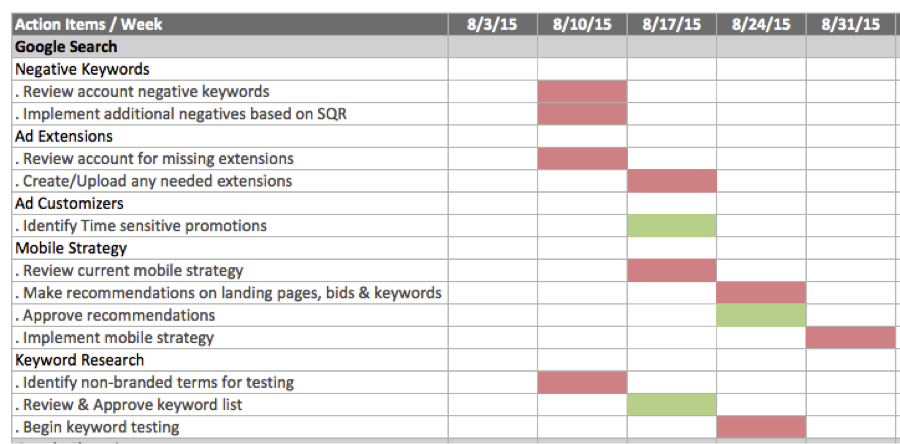When starting off with a new client, there are a myriad of things that need to be assessed by the account manager that all lead to strategy development. At times, it may seem difficult to know where to focus your attention or how initiatives should be prioritized. It might also be difficult to relay this to a client in a way in which expectations are managed and both the client and the account manager are on the same page. As a way to lay out initial account strategy, I frequently utilize a 90 day roadmap, which highlights where my attention will be during the first 90 days of account management. I’ve found these to be a very helpful way to prioritize and stay on track. In this post, I’ll walk you through my roadmap process and provide detail about how I use this document as a springboard for productive conversation with the client.
Getting Started
The first thing that you need to remember is that there is no set template for your roadmap. The reason for that is because the roadmap is full of action items that you deem will help you reach the goal that the client has set for you. It’s based on what you believe the focus needs to be as you begin your account management. For example, let’s say the client asks you to increase transactions while staying within a certain CPA range. In that case, the items on your roadmap would most likely be tasks that need to be accomplished to lead you to that goal. Since this document is shared with the client, you can also add in items that they need to do on their end to ensure success. The image below addresses a few of the items that I started off with on my last roadmap. The pink boxes indicate items to be completed by me and the green indicate the client.
Though many of these are tasks that we complete routinely in our account management, laying them out in this format give the client a birds-eye view as to what we are doing as we enter this relationship together. As you know, not everything an account manager does can be seen by viewing the account’s change history, so this document serves a dual purpose and really shows the client all the behind-the-scenes work that we are doing when we first come on to an account.
Client Collaboration
Once you’ve drafted your roadmap, take some time to review it over the phone with your client. Depending on their level of PPC knowledge, some parts of this may make more sense than other parts. Walk through it with them and explain why the items on the roadmap are important and how they will help them achieve their goals.
Explain how auditing their current mobile strategy will help you discover opportunities for them and then allow you to develop a new mobile strategy for them that makes sense. Explain how reviewing the negative keywords will help you find areas where negative conflicts exist or opportunities to implement additional negatives to the account. Explain how you’ll be doing this in Google, Bing and any other platform you’re managing for them. But, most importantly, explain to them how following this roadmap will lead the account to its ultimate destination – the goal that your client has asked you to reach.
Week-By-Week
If you have a weekly call with your client, a review of the roadmap status is a great place to start the conversation. Discuss the action items that you’ve accomplished over the past week and mention any measureable results. From my experience, this document can be a useful springboard for deeper conversation, which usually results in changes being made to the items on the list. That’s totally fine, as it was the result of a mutual discussion between you and the client. PPC certainly is not an exact science and account managers are no strangers to plans that change.
Gauge Results
As you cross items of that roadmap, make sure that you pause for a moment and assess any measurable results that your actions may have provided. Share those with the client so that they can understand how the roadmap is helping them get closer their goals. Oftentimes, account managers are so wrapped up in their work that they don’t get a moment to stop and show the client how their account work is moving the needle within their account. Reviewing the roadmap is a great way to accomplish this.
Final Thoughts
While there is some time involved in building a 90 day roadmap, it’s well worth the effort. Besides providing transparency for the client, it also serves as a to-do list for you and ensures that you address everything you deemed necessary to achieve the goal. Though there will be detours along the way, following the roadmap will definitely put you on the road to success.




